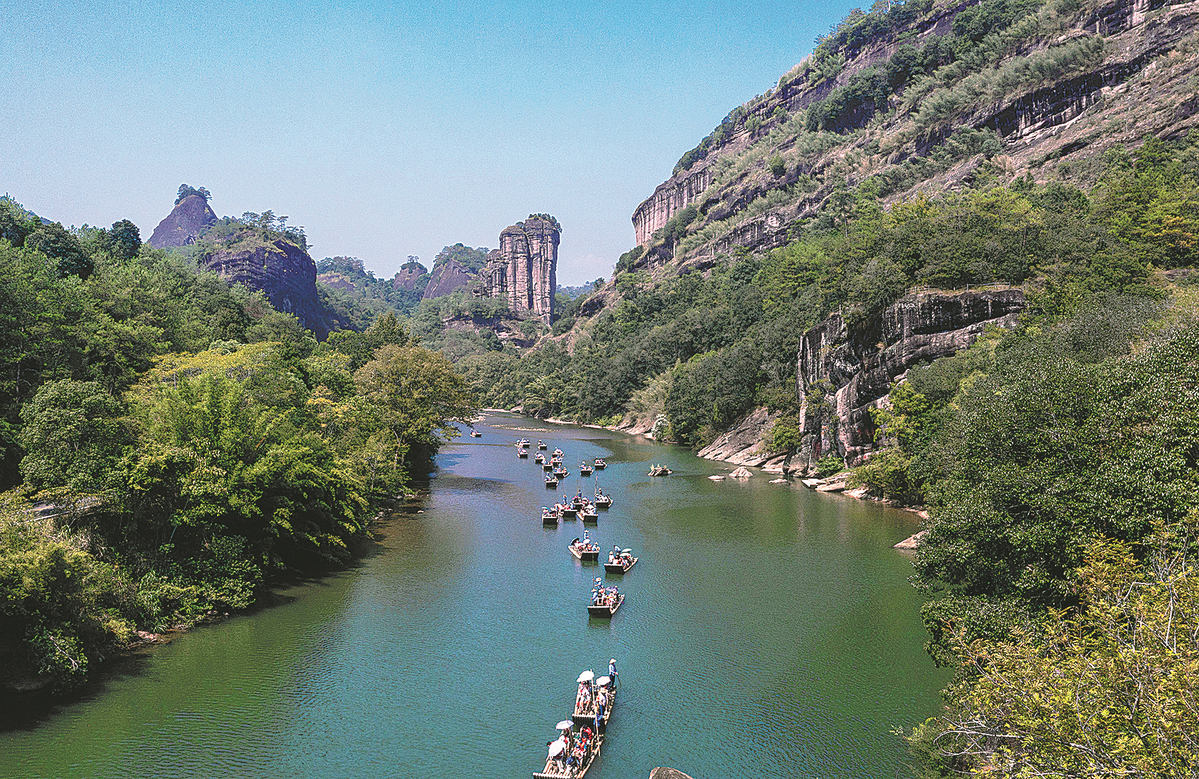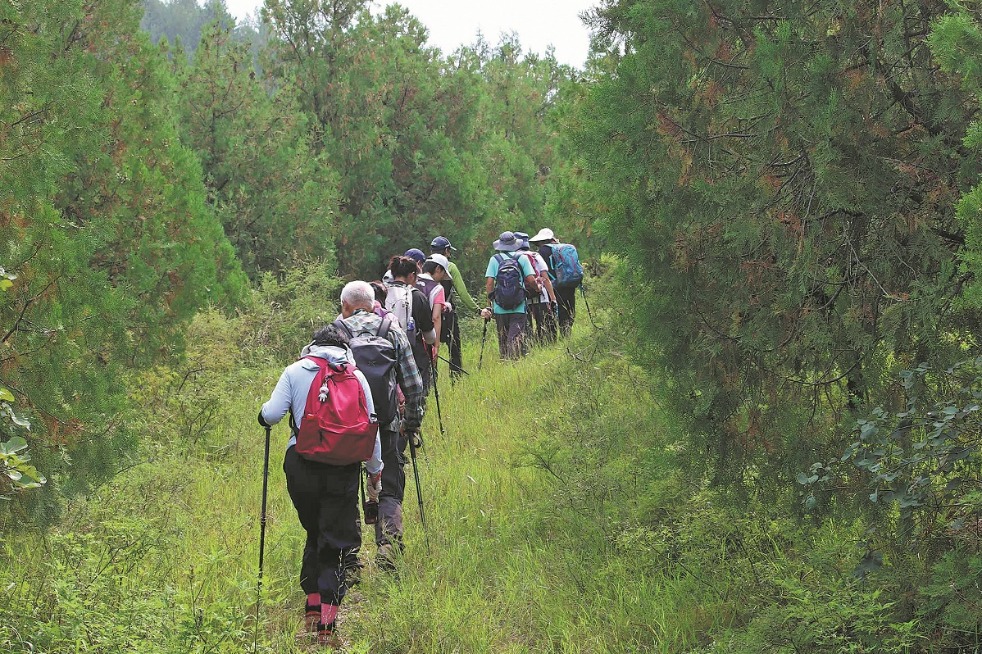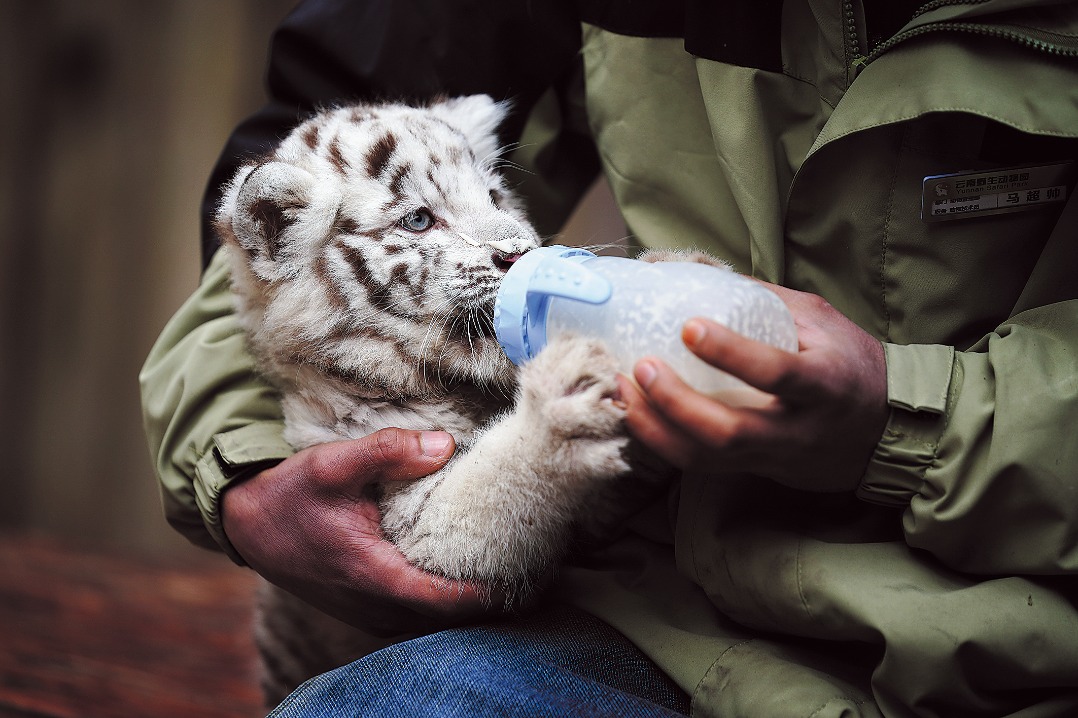Park managers balance care for people, nature


Local residents take on responsibilities as conservators and guides for public
Over the past year since China's first five national parks were launched, the parks' managers have been figuring out ways to deal with the relationship between conserving nature and benefiting local people.
Qu Jiapeng, a researcher from the Northwest Institute of Plateau Biology of the Chinese Academy of Sciences, said that inhabitants in the Three-River-Source National Park acquired some new titles including conservator and guide, which have given them a greater sense of belonging and pride in their home.
Among the five national parks that cover a total area of 230,000 square kilometers, the Three-River-Source National Park accounts for about 83 percent.
Conservators are responsible for ranging and cleaning. Among some 70,000 residents in the park, about 17,000 work as conservators.
Residents also have other jobs.
In designated spots of the park, several projects are available to the public including observing wild animals, hiking, drifting and nature education courses.
Some local residents have taken jobs as guides so people on a nature experience journey there can have a better chance to see animals from a safe distance, such as snow leopards, Qu said.
Some herdsmen work as guides driving rafts for visitors on the Lancang River, each of whom earns about an extra 30,000 yuan ($4,200) a year, according to a report by China News Service.
Each visitor needs to pay as much as 10,000 yuan for the experience.
"The high price both controls the number of visitors and increases local herdsmen's incomes," Qu said.
The income from the projects goes to households, community public affairs and the local animal conservation funds, he added.
"Residents feel more like owners of the land and are proud of living there by taking part in the protection and introducing their home to people from all walks of life."
To address potential conflicts between humans and animals as the wildlife increases in the park, the Qinghai government increased its compensation in a pilot program in July. For example, the compensation for a person's death caused by a wild animal was raised to 600,000 yuan, nearly three times more than before. The maximum compensation per household for the loss of production and living facilities is 300,000 yuan.
"Insurance reimbursement became faster. Local people can get paid after about 30 working days, instead of months," Qu said.
Last October, China announced its first group of five national parks, conserving nearly 30 percent of the country's key terrestrial wildlife species.
The five parks are the Three-River-Source National Park in Qinghai province and the Tibet autonomous region, the Wuyishan National Park in Fujian and Jiangxi provinces, the Giant Panda National Park in Sichuan, Shaanxi and Gansu provinces, the Northeast China Tiger and Leopard National Park in Jilin and Heilongjiang provinces, and the Hainan Tropical Rainforest National Park in Hainan province.
Since their establishment, these national parks have made achievements in environmental and species protection.
By October, the number of Siberian tigers at the Northeast China Tiger and Leopard National Park had increased from 27 in 2017 to about 50, while the number of Siberian leopards rose from 42 to 60 over the same period.
Meanwhile, at the Three-River-Source National Park, the number of Tibetan antelopes increased from fewer than 20,000 in the 1980s to more than 70,000 by October.
- A Chinese-Italian couple bridge cultures in N China's Tianjin
- Mi Loong: a thousand-year-old rice dragon tradition
- SumUp China presents latest social media trends for Chinese New Year
- China launches experimental satellite into space
- China to see 1.85m cross-border trips every day during holiday
- Open the door to a new year with Work in China




































